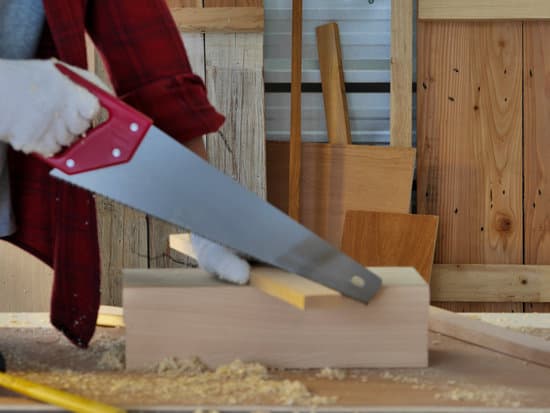Home is the place where we should feel the safest. It’s where we seek comfort, spend time with our loved ones, and create wonderful memories. However, even within the confines of our own homes, accidents can happen and potential hazards may be lurking. That is why it is crucial to prioritize safety at home and constantly strive for improvement.
The need for home safety cannot be overstated. Every year, countless households fall victim to accidents and emergencies that could have been prevented with proper safety measures in place. From slips and falls to fires and burglaries, the risks are varied and can have devastating consequences. Therefore, it is imperative that we take proactive steps to identify potential hazards in our homes and take appropriate actions to eliminate or minimize them.
Conducting a home safety assessment is an essential first step towards improving the safety levels of your living space. By systematically examining each room and identifying potential risks such as loose wiring, slippery surfaces, or unsecured furniture, you can effectively address any issues before they become a cause for concern.
Furthermore, enhancing home security with alarm systems and surveillance cameras provides an additional layer of protection against intruders and gives you peace of mind knowing that your family and belongings are safe.
In this article, we will explore various ways to improve safety at home by addressing different aspects such as fire prevention, childproofing measures, kitchen safety guidelines, outdoor space security, electrical safety precautions, utilizing smart technology for enhanced security and convenience, emergency preparedness planning, and much more. By following these guidelines and taking necessary precautions within your own home environment, you can create a safe haven for yourself and your loved ones.
Remember that regular evaluation and improvement of safety measures are key to ensuring peace of mind and overall well-being in your home.
Conducting a Home Safety Assessment
When it comes to improving safety at home, one of the first steps you should take is conducting a thorough home safety assessment. This assessment will help you identify potential hazards and areas that need improvement to ensure a safe living environment for you and your family. Here are some tips on how to effectively conduct a home safety assessment:
- Start with a room-by-room inspection: Begin by going through each room in your home and carefully inspecting it for any potential hazards. Look out for loose wires, frayed cords, or overloaded power outlets that can cause electrical accidents. Check if the windows and doors are properly secured and functioning well. Pay attention to flooring conditions, such as loose carpets or slippery tiles, which can lead to trips and falls.
- Test smoke alarms and carbon monoxide detectors: Make sure that all smoke alarms and carbon monoxide detectors in your home are in good working condition. Test them regularly to ensure they are functional and replace batteries as needed. These devices play a vital role in alerting you of potential fire or gas leaks, allowing you to take immediate action.
- Assess lighting conditions: Adequate lighting is crucial for preventing accidents at home, particularly in high-risk areas such as staircases, hallways, and outdoor pathways. Check if there are any dark spots where additional lighting may be needed. Consider installing motion sensor lights in areas where visibility is essential during nighttime.
Remember, an effective home safety assessment requires attention to detail and thoroughness. Make sure to compile a list of all identified hazards or areas that need improvement as you go along with the assessment process. By doing so, you’ll have a clear roadmap for addressing these issues promptly and enhancing the overall safety of your home.
Here is a checklist for conducting a comprehensive home safety assessment
- Inspect electrical outlets, cords, and appliances for any signs of damage or hazards.
- Check that furniture is stable, anchored to walls if necessary, and does not pose a tip-over risk.
- Ensure staircases have sturdy handrails and are well-lit to prevent falls.
- Test window locks and consider adding safety bars or window guards for added security.
- Examine the condition of floor coverings, making sure there are no loose rugs or carpets that can cause tripping hazards.
- Evaluate the accessibility of fire extinguishers, checking their expiration dates and ensuring they are easily reachable in case of emergencies.
- Inspect plumbing fixtures for leaks and proper functioning.
By being proactive and regularly conducting home safety assessments, you can mitigate potential risks and enhance the overall safety of your living space. Remember that prevention is key when it comes to home safety, and a thorough assessment is the first step towards achieving a secure environment for everyone in your household.
Enhancing Home Security
One crucial aspect of improving safety at home is enhancing home security. Installing effective alarm systems and surveillance cameras can significantly deter potential burglars and intruders. Here are some tips on how to install these security measures effectively:
- Determine your security needs: Assess the layout of your home and identify vulnerable areas that require additional security. This could include entrances, windows, and secluded areas. Understanding your specific needs will help you choose the right alarm system and surveillance camera placement.
- Install a reliable alarm system: Invest in a reputable alarm system that suits your budget and requirements. It should include door and window sensors, motion detectors, a control panel, and a loud siren or notification system. Ensure that all doors and windows are properly equipped with sensors to detect any unauthorized entry.
- Strategically place surveillance cameras: Install surveillance cameras at crucial points around your property to monitor activities in real-time or obtain recorded footage if necessary. Place them at entrances, near valuables, or in blind spots where intruders may try to access your property discreetly.
- Utilize smart technology integration: Consider integrating your home security system with smart devices for added convenience and functionality. This allows you to control and monitor your security system remotely using your smartphone or other compatible devices.
It’s important to note that while these security measures can greatly enhance safety at home, they should be complemented by other preventative measures such as locking doors and windows when leaving the house, utilizing outdoor lighting, and joining neighborhood watch programs for collective vigilance.
By following these tips and implementing an effective alarm system coupled with surveillance cameras, you can create a secure environment for yourself and deter potential threats from entering your property without authorization.
Fire Safety Measures
Fires can be devastating, causing not only property damage but also serious injury or even loss of life. That is why it is crucial to have effective fire safety measures in place to prevent fires from starting and to handle any emergencies that may arise. By following some essential steps, you can greatly reduce the risk of fire in your home.
One of the most important fire safety measures is having smoke alarms installed throughout your home. These alarms should be placed on every level of the house, including inside each bedroom and outside sleeping areas. It is recommended to test smoke alarms monthly and replace batteries annually or as needed. Having a working smoke alarm can provide early warning, allowing you and your family to escape quickly in case of a fire.
In addition to smoke alarms, it is essential to have fire extinguishers readily available in your home. Place them in key areas such as the kitchen, garage, and near any other potential sources of fire.
Make sure everyone in your household knows how to operate a fire extinguisher effectively and understands the PASS technique (Pull the pin, Aim at the base of the fire, Squeeze the handle, Sweep from side to side). Regularly inspect your extinguishers for any signs of damage or expiration dates.
Lastly, creating a well-thought-out escape plan is crucial for ensuring everyone’s safety during a fire emergency. Identify two exit routes from each room and establish a meeting point outside your home where everyone can gather after escaping. Practice this plan with all members of your household regularly so that it becomes second nature in case of an actual emergency.
| Essential Fire Safety Measures |
|---|
| Install smoke alarms on every level of your home |
| Test smoke alarms monthly and replace batteries annually |
| Keep fire extinguishers in key areas of the house |
| Teach everyone in your household how to use a fire extinguisher |
| Create and practice an escape plan with multiple exit routes |
Childproofing Your Home
Childproofing your home is an essential step in ensuring the safety and well-being of your children. Children are naturally curious and prone to exploring their surroundings, which can sometimes lead to accidents and injuries. By implementing proper safety measures, you can create a safe environment for your children to thrive in. Here are some important tips on how to childproof your home:
Securing Furniture and Electronics
One of the first steps in childproofing your home is to secure heavy furniture, appliances, and electronic devices that can pose a risk of tipping over. Anchor heavy furniture, such as bookshelves, dressers, and TVs, to the wall using brackets or straps. This will prevent them from toppling if a child tries to climb on them or accidentally bumps into them.
Installing Safety Gates
Safety gates are crucial for blocking off hazardous areas of your home, such as stairs or rooms with potential dangers. Install safety gates at the top and bottom of staircases to prevent falls. You can also use safety gates to restrict access to certain rooms or areas where there may be dangerous substances or objects.
Covering Electrical Outlets
Electrical outlets pose a significant risk for young children who may insert objects into them. Use outlet covers or plug protectors to keep little fingers away from electrical sockets. Additionally, consider using electrical strip covers to prevent children from tampering with cords and appliances.
Secure Cabinets and Drawers
Cabinets and drawers in kitchens and bathrooms often contain hazardous items such as cleaning supplies, sharp utensils, or medications. Install childproof locks or latches on cabinets and drawers containing these items to prevent access by curious children.
By taking these childproofing measures, you can significantly reduce the risk of accidents and provide a safe environment for your children at home. Regularly reassess these safety measures as your child grows and develops new capabilities to ensure that your home remains safe as they explore and learn. Remember, childproofing is not a substitute for supervision, so always keep an eye on your children to prevent accidents and injuries.
Preventing Accidents in the Kitchen
The kitchen is often considered the heart of the home, but it can also be a dangerous place if safety precautions are not taken. According to the National Fire Protection Association, cooking equipment is the leading cause of home fires and fire injuries. Therefore, it is crucial to implement safety guidelines in the kitchen to prevent accidents such as burns, cuts, and other mishaps.
One of the most important safety measures in the kitchen is proper handling and storage of sharp objects. Knives should always be stored in a secure block or drawer when not in use, with their blades facing downward. When using knives, it is essential to cut away from the body and keep fingers away from the blade. Additionally, investing in cutting boards made of sturdy materials can help prevent slips and accidental knife injuries.
Another common cause of accidents in the kitchen is burns. It is crucial to be cautious and attentive while working with hot surfaces such as stovetops and ovens. Always use oven mitts or pot holders when handling hot pots, pans, or dishes. Furthermore, ensure that handles are turned inward on the stove so they cannot be accidentally knocked off or grabbed by children.
To prevent fires in the kitchen, it is vital to practice safe cooking habits. Never leave cooking unattended, especially when using high heat settings or frying foods.
Keep flammable items such as potholders, curtains, and paper towels away from open flames or heating elements. In case of a grease fire in a pan, do not pour water on it as it can spread and exacerbate the fire; instead, cover it with a lid or use baking soda to smother the flames.
Implementing these safety guidelines can significantly reduce accidents and injuries in the kitchen. By being vigilant and proactive about kitchen safety measures, individuals can create a safer environment for themselves and their loved ones.
| Safety Guidelines | Description |
|---|---|
| Proper Handling and Storage of Sharp Objects | Knives should be stored securely with blades facing downward and cut away from the body. |
| Preventing Burns | Use oven mitts or pot holders, turn handles inward to avoid accidents, and keep flammable items away from heat sources. |
| Safe Cooking Habits | Never leave cooking unattended, use appropriate heat settings, and handle grease fires properly with a lid or baking soda. |
Creating a Safe Outdoor Space
Creating a Safe Outdoor Space: Tips for Securing Your Backyard or Patio Area to Prevent Accidents and Intrusions
Outdoor spaces, such as backyards or patios, are the perfect area to relax and unwind. However, it is important to prioritize safety in these areas to prevent accidents and intrusions. By taking the necessary precautions, you can ensure that your outdoor space remains a secure and enjoyable environment for you and your family.
Installing Proper Lighting
One effective way to enhance safety in your outdoor space is by installing proper lighting. Illuminating the pathways, entranceways, and dark corners of your backyard or patio area will deter potential intruders while also reducing the risk of accidents caused by trips and falls. Consider installing motion-sensor lights that automatically activate when someone approaches, providing an added layer of security.
Securing Fences and Gates
Another crucial aspect of creating a safe outdoor space is ensuring that your fences and gates are secure. Regularly inspect them for any damages or weak spots that need immediate repair. It is recommended to use strong and sturdy materials such as steel or wrought iron for fences, along with heavy-duty locks for gates. Additionally, consider using self-closing mechanisms on gates to prevent them from accidentally being left open.
Landscape Maintenance
Proper landscape maintenance plays a significant role in keeping your outdoor space safe. Trim any overgrown shrubs or trees near windows or entry points to eliminate potential hiding spots for intruders. Removing dead branches and debris not only reduces fire hazards but also prevents accidents caused by falling objects during storms or high winds. Additionally, keeping the walkways clear of obstacles ensures safe navigation throughout your outdoor area.
Installing Security Cameras
For added peace of mind, installing security cameras in strategic locations throughout your outdoor space can help deter trespassers and assist in identifying any suspicious activities. Choose cameras with high-resolution capabilities and wide-angle views to capture a larger area. Consider connecting the cameras to your home’s surveillance system or utilizing smart technology that allows for remote monitoring through your smartphone or computer.
Taking these measures to secure your backyard or patio area will greatly contribute to overall safety at home. By investing time and effort into creating a safe outdoor space, you can enjoy peace of mind knowing that you have taken the necessary precautions to prevent accidents and intrusions in this important part of your living environment.
Ensuring Electrical Safety
Electrical safety is a crucial aspect of home safety that should not be overlooked. Understanding the importance of proper wiring and electrical equipment maintenance can help prevent potentially dangerous situations in your home. Here are some key points to consider when it comes to ensuring electrical safety:
- Regular inspection and maintenance: It is essential to conduct regular inspections of your electrical system to identify any potential hazards or signs of wear and tear. This includes checking for loose connections, frayed wires, or any other visible damage. If you notice any issues, it is crucial to address them promptly by calling a professional electrician.
- Proper wiring: Ensuring that your home’s wiring is done correctly is vital for preventing electrical accidents and fires. Faulty wiring can lead to short circuits, overheating, and other hazardous situations. It is recommended to hire a qualified electrician who follows the local building codes and standards when installing or repairing wiring in your home.
- Overloading prevention: Overloading electrical outlets can increase the risk of fires and electrical shocks. Avoid plugging too many devices into one outlet or using multiple extension cords as a permanent solution. Use power strips with overload protection features instead, which can help prevent overheating and fire hazards.
| Electrical Accidents | Annual Average |
|---|---|
| Electrocutions | 400 |
| Residential Fires Caused by Electrical Malfunctions | 24,000 |
| Injuries Caused by Household Electrical Accidents | 30,000+ |
By understanding the importance of proper wiring and electrical equipment maintenance, you can significantly reduce the risk of electrical accidents and ensure the safety of your home and loved ones. Remember, if you are unsure about any electrical issues or need assistance with maintenance or repairs, always consult a qualified electrician to avoid any potential hazards.
Maximizing Home Safety with Smart Technology
Smart technology has revolutionized various aspects of our lives, and home safety is no exception. With the advancement of smart home devices, homeowners now have access to a range of tools and features that can significantly enhance their security and convenience. This section will explore how individuals can maximize home safety with the utilization of smart technology.
Smart Security Systems
One of the most popular applications of smart technology in home safety is the installation of a smart security system. These systems typically include components such as motion sensors, door/window sensors, and surveillance cameras that can be connected to a central hub or controlled through a mobile app.
The benefits of smart security systems include real-time monitoring, remote access, and customizable features that allow homeowners to tailor the system to their specific needs. Additionally, some systems even offer integration with voice assistants like Alexa or Google Home, allowing users to control their security system hands-free.
Smart Locks and Video Doorbells
Smart locks and video doorbells are other essential components for maximizing home safety. Smart locks offer keyless entry options through PIN codes or biometric identification, eliminating the risk of lost or stolen keys.
Video doorbells provide homeowners with real-time video streaming and two-way communication capabilities, allowing them to see who is at their doorstep before opening the door. These devices also provide alerts when there is motion detected near the front entrance of the house or when someone rings the doorbell.
Environmental Monitoring
Smart technology extends beyond just physical security measures; it can also help in monitoring potential hazards within your home environment. Smart smoke detectors can detect smoke and send alerts to your smartphone even when you’re not at home, ensuring timely action in case of fire emergencies.
Carbon monoxide detectors equipped with smart technology can also notify inhabitants if dangerous levels are detected in the air. Additionally, water leak sensors can detect leaks or excessive moisture, preventing potential damage from flooding.
By utilizing smart home devices for enhanced security and convenience, homeowners can significantly improve the safety of their premises. From smart security systems and locks to environmental monitoring devices, the advancements in technology offer a wide range of options for individuals to safeguard their homes.
The ability to remotely monitor and control these devices through mobile apps provides peace of mind and flexibility, allowing homeowners to keep their properties secure even when they are away. Investing in these smart technologies ensures that individuals have access to the latest tools and features available for protecting their homes and loved ones.
Emergency Preparedness
One of the most crucial aspects of home safety is being prepared for emergencies. Creating an emergency plan and assembling a well-stocked first aid kit can make a significant difference in how effectively you handle unexpected situations. By having a comprehensive emergency plan in place, you can ensure the safety of your family and minimize potential risks.
When creating an emergency plan, start by identifying potential risks specific to your location. Are you in an area prone to natural disasters such as earthquakes or hurricanes? Do you live near a hazardous industrial site? Understanding the potential threats will help you tailor your plan accordingly. Make sure to involve everyone in the household, including children, so that they know what to do in case of an emergency.
Designate safe zones and establish evacuation routes within your home. Identify escape routes from each room and determine a central meeting place outside the house where everyone can gather after evacuating. It is also important to have a backup communication plan if traditional methods such as phone lines are disrupted during emergencies. Designate a family member or friend who lives outside the area as a point of contact.
In addition to creating an emergency plan, it is equally important to assemble a first aid kit that contains essential supplies for handling injuries or medical emergencies at home. A basic first aid kit should include items like adhesive bandages, sterile gauze pads, antiseptic wipes, scissors, tweezers, gloves, pain relievers, and any necessary prescription medications.
Regularly check and restock your first aid kit to ensure that all items are up-to-date and not expired. Keep your first aid kit easily accessible in a designated area that is known to all family members.
By taking these steps to create an emergency plan and assemble a well-equipped first aid kit, you are proactively addressing potential risks and ensuring the safety of your loved ones during unexpected situations. Remember to review and practice your emergency plan regularly, as preparedness is the key to minimizing damage and maximizing safety.
Conclusion
In conclusion, ensuring the safety of our homes is an ongoing process that requires regular evaluation and improvement. By conducting a home safety assessment and identifying potential hazards, we can take proactive steps to minimize risks and create a secure environment for ourselves and our loved ones. Enhancing home security through the installation of alarm systems and surveillance cameras adds an extra layer of protection, providing peace of mind and deterring potential intruders.
Fire safety measures are essential in preventing and handling fire emergencies at home. By implementing simple steps such as installing smoke detectors, having fire extinguishers readily available, and creating an evacuation plan, we can significantly reduce the risk of fire-related incidents. Childproofing the home is crucial for families with young children, as it ensures a safe environment where they can explore without fear of accidents or injuries.
The kitchen is a common area where accidents occur. Following safety guidelines such as using oven mitts when handling hot objects, keeping sharp knives out of reach of children, and practicing proper food handling techniques can help prevent burns, cuts, and other mishaps in the kitchen. Outside areas like backyards or patios should also be secured to prevent accidents and intrusions.
Electrical safety should not be overlooked either. Understanding the importance of proper wiring and regularly maintaining electrical equipment is crucial to prevent electrical shocks or fires. Furthermore, utilizing smart home devices can enhance security and provide convenience by monitoring your home remotely through your smartphone or voice assistant.
Lastly, emergency preparedness cannot be emphasized enough. Creating an emergency plan that includes important contact numbers and assembling a well-stocked first aid kit are indispensable in unexpected situations.
By regularly evaluating and improving safety measures at home, we prioritize our own peace of mind and overall well-being. Taking these precautionary steps not only protects us from potential dangers but also provides comfort knowing that we have done everything possible to keep ourselves and our loved ones safe.
Frequently Asked Questions
How can I improve my home safety?
To improve home safety, there are several measures one can take. First and foremost, ensuring that smoke detectors are installed on every level of the house and regularly checking their batteries is crucial for early fire detection. Another important step is to have a well-maintained security system in place, including sturdy locks on doors and windows, as well as installing outdoor lighting to deter potential intruders.
Homeowners should also evaluate potential hazards such as loose rugs, cluttered walkways, or exposed cords that can cause trips or falls and address them accordingly. Additionally, having a well-stocked first aid kit readily available can be immensely helpful in case of accidents or injuries around the house.
What are 10 safety rules at home?
There are numerous safety rules that one should follow at home to ensure the well-being of everyone living there. Firstly, always keep staircases clear of obstacles and use handrails when using stairs to minimize the risk of falling. Secondly, it is essential to keep all cleaning supplies and chemicals out of reach of children and pets in secure cabinets.
It’s also important to educate family members about kitchen safety practices like never leaving cooking unattended and proper handling of hot objects. Regularly checking electrical cords for any signs of damage or fraying and keeping them away from heat sources is another vital safety precaution. Other rules include being cautious when using portable heaters, keeping emergency numbers visible near phones, practicing safe water usage habits in bathrooms, knowing how to safely store medications, understanding how to operate fire extinguishers, and keeping sharp objects such as knives securely stored.
What are 3 ways you can keep your home safe from intruders?
Protecting your home from intruders involves implementing multiple layers of security measures. One effective way is by installing a high-quality security system with surveillance cameras that cover entry points around your property; this alone acts as a visual deterrent for potential burglars. Another excellent strategy is improving physical barriers by reinforcing doors with deadbolt locks and upgrading windows with shatterproof glass or additional locks.
Additionally, it is advisable to install motion sensor lights outside the house, making it difficult for intruders to approach unnoticed. Regularly maintaining and trimming hedges or bushes near windows can remove possible hiding spots for burglars. Lastly, establishing a good relationship with neighbors can create a sense of community watch where everyone keeps an eye out for any suspicious activity around each other’s homes, helping to deter intruders and increase overall safety in the area.

I’m thrilled to have you here as a part of the Remodeling Top community. This is where my journey as an architect and remodeling enthusiast intersects with your passion for transforming houses into dream homes.





